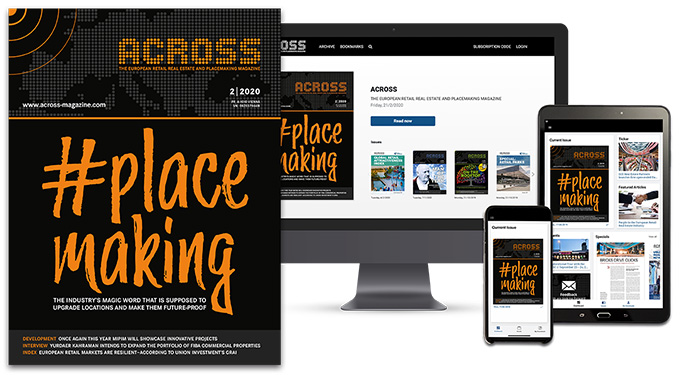By David Fuller-Watts
Across Europe, retail real estate is in the midst of a profound transformation. Gone are the days when long-term leases and stable tenants guaranteed predictable returns. As we are all aware, landlords are navigating an environment defined by shifting consumer behavior, economic uncertainty, and the growing complexity of omnichannel retail.
In this new landscape, retail leasing is no longer just about filling space – it’s about balancing two increasingly competing forces: flexibility and stability. Retailers want lease terms that reflect the volatility of their business models, while landlords seek dependable income streams and long-term asset value. The challenge is finding a sustainable middle ground.
In the years since the pandemic, flexibility has become more than a trend; it’s a necessity. Retailers face mounting pressure from online competition, rapidly changing consumer expectations, and the financial unpredictability of physical store performance. This has led to a surge in requests for shorter leases, turnover-based rents, pop-up spaces, and options to exit early or renegotiate terms.
At the same time, a new wave of direct-to-consumer brands has entered the high street, not to plant permanent flags, but to test physical retail through short-term experiences. These retailers, often digital natives, are looking for agility and low commitment, not traditional 10-year leases.

David Fuller-Watts
CEO of Kinexio
While landlords have been open to adapting, this shift toward flexibility introduces real risks. Shorter lease terms can lead to higher turnover and vacancy rates. Turnover-based rents, though appealing in a strong sales environment, can cause revenue volatility during downturns. In a dynamically changing landscape, operationally, managing a portfolio with more moving parts, frequent tenant changes, dynamic rent models and bespoke clauses places a heavy burden on already stretched leasing teams. It is paramount that those teams can focus on the deal, to curate the best tenant mix possible, and to be agile when any adaptations need to be made. Technology should take care of the ROI, leaving time and resources to focus on building leasing strategies and tenant relationships that will ultimately enhance asset performance.
So, how do retail landlords and asset managers embrace this new leasing paradigm without undermining their long-term performance?
The answer lies in building smarter lease portfolios – ones that leverage technology, data, and segmentation to navigate uncertainty with confidence.
Smart leasing requires a change in strategy regarding how data is used. It requires landlords to tap into the insights that enable them to not only understand tenant performance, across sales, footfall, and seasonal trends, as well as visibility into which tenants are thriving and which may need support or restructuring, but to also be able to effect change with the information at hand. Data alone is not enough: Understanding the risk, potential impact, and where changes to tenants or lease structures could be made is crucial. This level of visibility allows asset managers to proactively manage risk, rather than reacting to lease events after the fact.
Technology plays a vital role in making that possible. More importantly, it is not out of reach: With the right platform, valuable insights can now be gained and immediately implemented by consolidating occupancy data, turnover rents, and sales performance in a single dashboard. That enables landlords to simulate the impact of various scenarios, such as changes in foot traffic, the activation of break clauses, or shifts in market demand, on their overall portfolio performance. With such insight, strategies to enhance property performance and mitigate risk can be adapted asset by asset, or even retailer by retailer.
Crucially, technology also enables landlords to manage this complexity without sacrificing control. Automated rent calculations, alerts for key dates, and real-time reporting tools reduce the administrative burden and minimize risk, while giving investors and stakeholders the transparency they increasingly demand.
As retail continues to evolve, the most successful asset owners and operators will be those that recognize that flexibility and stability are not mutually exclusive. When applied strategically, they can complement each other – attracting tenants, adapting to market changes, and preserving asset value in the process.
Credit for all images: Kinexio






